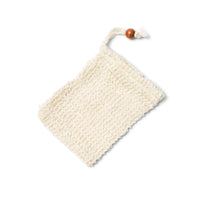
Confession time: We love food — a lot. There is something oh-so-satisfying about trying a new recipe and creating a home-cooked meal from scratch. We also love how food can bring people together and provide comfort in times of uncertainty (like right now).
What we don’t love is how much food ends up in landfills. According to the Environmental Protection Agency, an estimated 63.1 million tons of food waste was generated in 2018. And while much of this food is lost during the production phase, food waste also happens when consumers toss out edible food.
If you’ve recently started down the path of low-waste living, tackling food waste in the kitchen may seem like a daunting task. But don’t stress! Even small changes can make a big impact, and The Earthling Co. is here to help you take that first step to greening up your kitchen.
Shop Low-Waste LivingBenefits of Reducing Food Waste
- Protects the planet by reducing methane — a powerful greenhouse gas that contributes to climate change.
- Saves you money because you will be buying less food and making the most of what you already have in your pantry.
- Strengthens local communities by providing edible food to those in need.
- Levels up your cooking skills by forcing you to get creative with leftovers and existing ingredients.
- Inspires you to choose sustainable kitchen products and other eco-conscious items that will help reduce waste (food and otherwise) in your home and life.
How to Reduce Your Food Waste
Minimizing food waste in your home doesn’t need to be a Herculean task. Here are a few simple (and delicious!) ways to help you waste less food.
1. Make a List and Buy Only What You Need
It sounds so simple, doesn’t it? Yet so many of us make the mistake of shopping without a plan (or worse, shopping on an empty stomach), causing us to buy far more than we actually need. Plan your grocery trips in advance and buy only the foods on your list. Don’t forget to eat a snack before you go!

Source: 5 Second Studio/Shutterstock
2. Get Creative with Leftovers
Let’s say that you’ve recently made a huge batch of veggie burgers. And they were delicious…for the first two nights. But now, you’re starting to get bored. The solution? Put your leftovers in a tortilla and have delicious veggie tacos! Repurposing leftovers is super easy (after all, most of the food has already been made) and ensures that no food goes to waste.
3. Befriend Your Freezer
Can’t get through all of your leftovers before they go bad? No biggie — just pop them in the freezer. The list of foods that you shouldn’t freeze is fairly short, which means you should be able to preserve most meals without an issue. Utilizing your freezer storage also allows you to buy foods in bulk, which saves you money while reducing plastic waste.
Psst…Want to minimize even more plastic waste in your kitchen? Boost your dishwashing game with our plastic-free dish soap. It pairs well with our reusable dish brush.

4. Eat ‘Ugly’ Produce
Society’s strict beauty standards don’t just apply to people — they apply to produce, too. From bruised apples to oddly-shaped carrots, “ugly” produce often gets wasted due to cosmetic reasons. One way you can help reduce our nation’s food waste problem is by looking for “imperfect produce” bins at grocery stores.
5. Understand Expiration Dates
Sell-by, use-by, best-before — companies use many confusing terms to let consumers know when they should eat their food. But the truth is, these terms aren’t regulated and are usually just the manufacturer’s way of letting consumers know when their food is at peak freshness. To avoid tossing out perfectly good food, use your best judgment with food that is slightly past its expiration date.
6. Try Composting
Composting leftover food is a great way to make smart use of leftover table scraps. Set up a composting system in your yard or on your countertop. You can also check to see if your city has a drop-off service that will take your food scraps.
7. Save Your Table Scraps
If composting isn’t an option for you, don’t toss out your scraps just yet! Leftover table scraps can be reused in many delicious ways. For instance, if you have leftover bones, you can use them to make soup stock. Breadcrumbs can be turned into savory croutons. And orange peels can be used to zest up your meals and give smoothies a tangy flavor!
8. Divert Food From Landfills
Whether it’s using every last table scrap or reducing how many groceries you buy at the store, there are plenty of small things you can do to help minimize food waste. And don’t forget: You can always donate your safe, untouched food to local food banks to help those in need!





